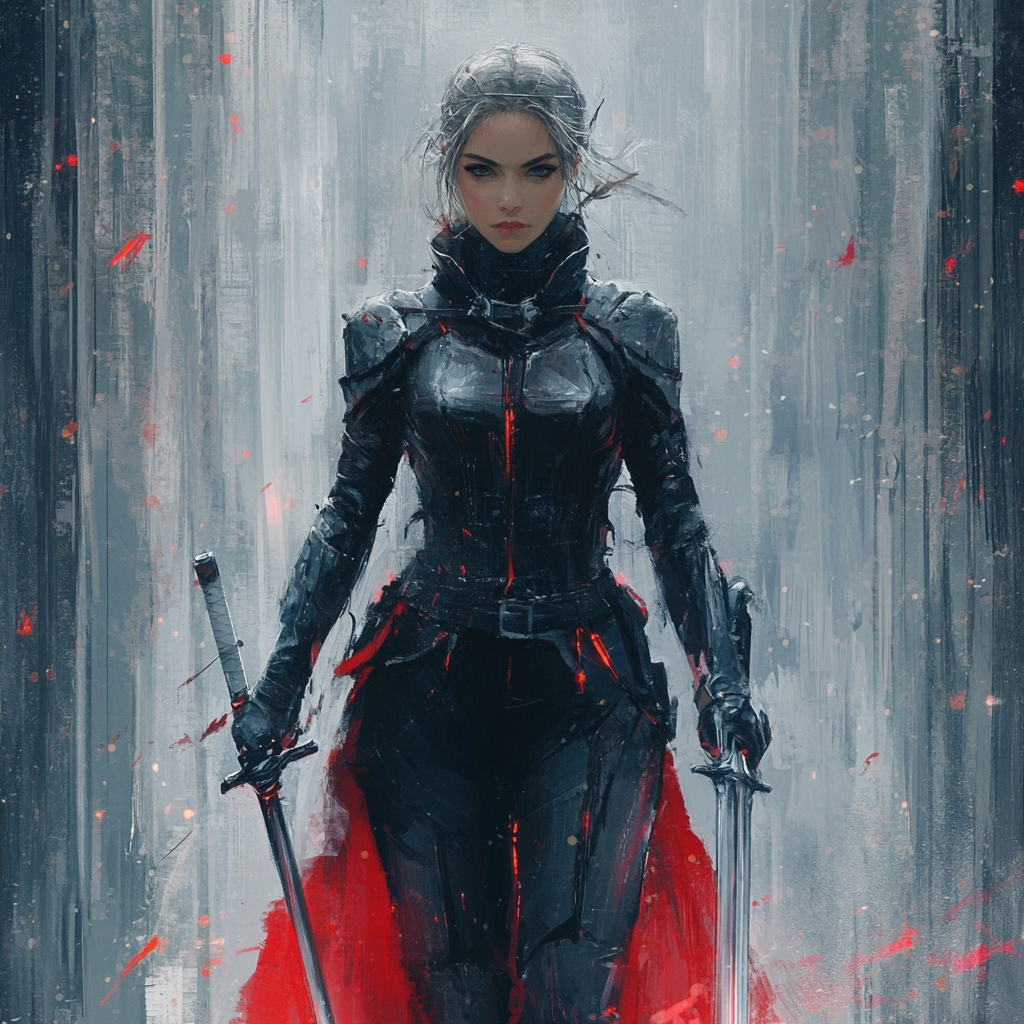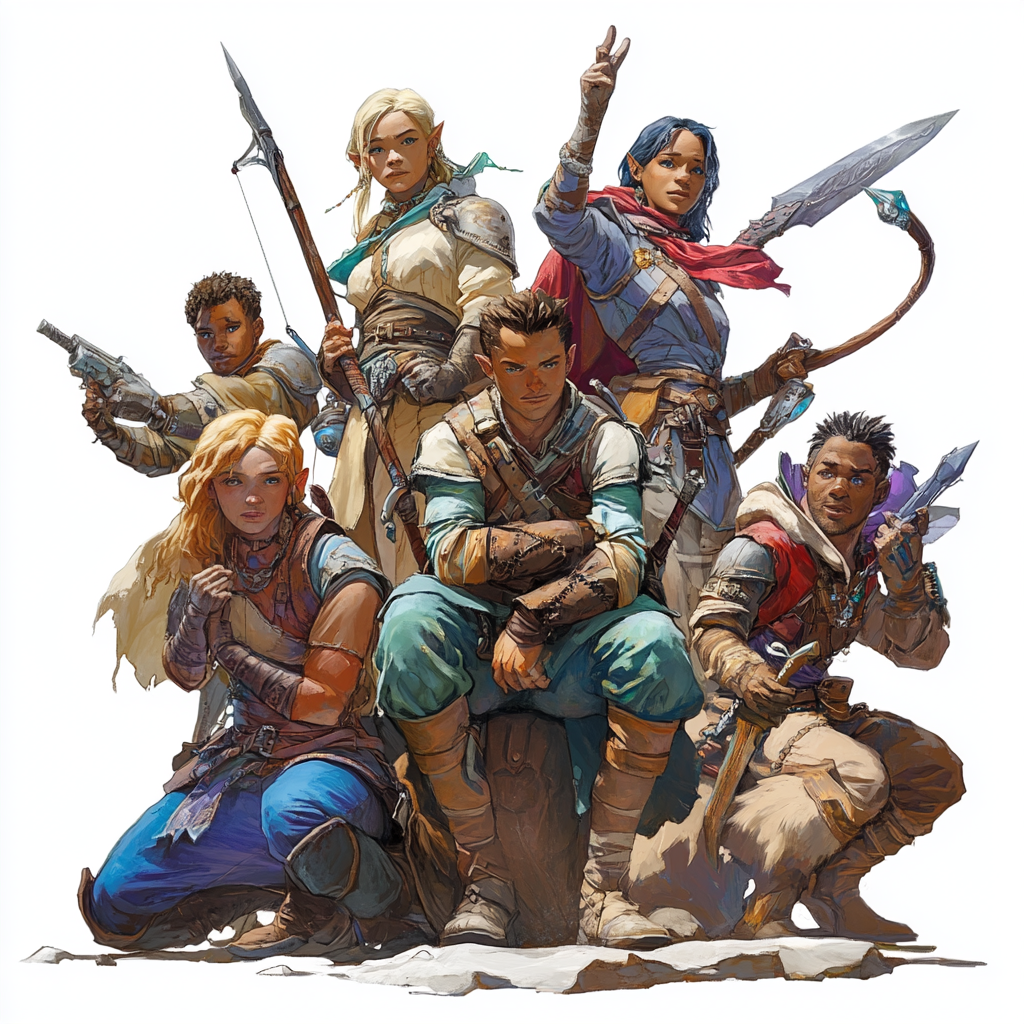Disclaimer: This post contains affiliate links. This means I may earn a commission should you choose to sign up for a program or make a purchase using my link.
Fantasy is a genre filled with wonder, mythical creatures, enchanted lands, and epic battles between good and evil. But no matter how rich your world-building is, it’s your characters that will make or break your story. Readers might be drawn in by magic and adventure, but they stay for the heroes they admire, the villains they love to hate, and the complex supporting cast that brings the world to life.
So how do you craft fantasy characters that are truly unforgettable? Whether you’re writing a noble hero, a cunning villain, or a mysterious side character, your goal should be to make them feel real, multidimensional, flawed, and compelling. In this post, we’ll explore how to create characters who stand out in the vast world of fantasy fiction.

1. Crafting a Memorable Fantasy Hero
At the heart of many fantasy stories is the hero: a character who embarks on a journey, faces great trials, and often grows into someone stronger, wiser, or more powerful by the end. But writing a truly great hero requires more than just giving them a sword and a noble heart.
Essential Traits of a Strong Fantasy Hero:
- Relatable Flaws: No one wants to read about a perfect protagonist. Give your hero weaknesses, self-doubt, recklessness, and or arrogance that they must overcome.
- A Personal Motivation: Why does your hero fight? Whether it’s revenge, duty, or a personal vow, their motivations should be clear and deeply rooted.
- A Unique Skill or Strength: Your hero should have a distinctive ability or trait that makes them stand out. Maybe they’re the only one who can wield a legendary artifact, or they have an unusual way of solving problems.
- A Strong Arc: Your hero should change over time. Will they become stronger and wiser? Or will power and hardship corrupt them? The best heroes evolve throughout the story.
Fantasy Hero Archetypes & How to Reinvent Them
Many fantasy heroes fall into familiar archetypes. The trick is to add your own twist.
- The Chosen One – A character with a special destiny (e.g., Harry Potter, Frodo Baggins). Subvert this trope by making the prophecy ambiguous or showing how being “chosen” is more of a curse than a blessing.
- The Reluctant Hero – Someone forced into heroism (e.g., Bilbo Baggins, Jon Snow). Instead of making them hesitant the whole time, let them grow into their role in unexpected ways.
- The Anti-Hero – A morally gray character who isn’t purely good (e.g., Geralt of Rivia, Kaz Brekker). Ensure they still have a strong internal code, even if it doesn’t align with traditional heroism.
The key to making your hero unforgettable is depth. Give them contradictions, struggles, and internal conflicts that make them feel real.
2. Creating a Truly Iconic Fantasy Villain
No great fantasy story is complete without a formidable villain. A well-written antagonist doesn’t just create obstacles for the hero—they elevate the entire story by adding conflict, moral dilemmas, and high stakes.
What Makes a Great Villain?
- A Convincing Motivation: The best villains don’t do evil just for the sake of it. They believe they’re the hero of their own story. Maybe they seek power to save their people, or they view the hero as the real threat.
- A Personal Connection to the Hero: A villain who has a history with the protagonist, whether they were once allies, family, or former mentors, creates deeper emotional stakes.
- A Unique Presence or Symbolism: Memorable villains have something that sets them apart, whether it’s a chilling presence, a distinctive visual trait (a mask, a scar, an unusual weapon), or a powerful ideology.
- Strength and Competence: If your villain is too easily defeated, they won’t feel like an actual threat. They should challenge your hero at every turn and often be one step ahead.
Fantasy Villain Archetypes & How to Make Them Fresh
- The Dark Lord – A powerful, often ancient evil (e.g., Sauron, Voldemort). To avoid clichés, consider giving them a tragic origin or a more personal, nuanced reason for their evil.
- The Corrupt Leader – A king, queen, or ruler whose power has twisted them (e.g., Joffrey Baratheon, The White Witch). Give them moments of charm or vulnerability to add complexity.
- The Fallen Hero – A former good guy turned villain (e.g., Darth Vader, Morgoth). Make their fall feel inevitable yet tragic by exploring their inner turmoil.
A great villain should challenge not just the hero’s physical strength, but also their beliefs and morality. Make them more than just an obstacle. Make them unforgettable.

3. Building a Diverse and Interesting Supporting Cast
While heroes and villains steal the spotlight, a fantasy world feels richer with a well-developed supporting cast. Allies, mentors, sidekicks, and rivals all help to flesh out the world and provide different perspectives on the main conflict.
Types of Supporting Characters & How to Make Them Shine
- The Mentor: A wise guide who helps the hero. Avoid making them an infallible figure. Perhaps their advice is flawed, or they have their own regrets and failures.
- The Loyal Friend/Sidekick: A best friend, squire, or companion who supports the hero. Instead of making them purely comic relief, give them their own motivations and emotional depth.
- The Rogue or Wild Card: Someone whose loyalty is unclear, adding an element of unpredictability. They could betray the hero… or come through at the last moment.
- The Love Interest: Love interests in fantasy shouldn’t just exist to support the protagonist. Make them an independent character with their own goals and struggles.
The key to a great supporting cast is ensuring that each character has a distinct voice, role, and motivation. They should feel like real people, and not just plot devices.
4. Giving Your Characters Depth and Complexity
Unforgettable fantasy characters aren’t just defined by their roles in the plot. They feel like real people with strengths, weaknesses, desires, and fears.
How to Add Depth to Your Characters:
- Internal Conflicts: No one is completely good or evil. A hero might struggle with doubt or temptation, while a villain might have moments of kindness or hesitation.
- Contradictions: People are complex. Maybe your battle-hardened warrior has a soft spot for stray animals. Maybe your ruthless queen secretly longs for a simple life.
- Flaws That Matter: Instead of giving your hero a surface-level flaw (like being “too nice”), give them flaws that create real consequences, like stubbornness leading them to make bad decisions.
- Growth and Change: Every character should grow over the course of the story. Maybe they learn something about themselves, change their beliefs, or overcome their fears.
A well-developed character feels like they exist beyond the pages of your story. Take time to understand their backstory, personality, and emotional arc.
5. Using World-Building to Strengthen Your Characters
Your fantasy world should shape your characters. The culture they come from, the magic system they use, and the history of their land should all influence who they are.
Consider the Following World-Building Aspects:
- How Does Magic Affect Them? Are they gifted with magic, or is magic forbidden in their world? Do they fear it, crave it, or see it as a burden?
- What Are Their Cultural Beliefs? A character raised in a strict warrior society will behave differently than one from a scholarly city.
- What Is Their Role in Society? Are they nobility, a thief, an outcast? Their social status should shape their worldview and struggles.
Your world-building should feel integrated into your characters, making them feel like products of their environment rather than just generic fantasy figures.
Wrap Up
Creating unforgettable fantasy characters requires depth, complexity, and a spark of originality. Whether you’re crafting a hero, a villain, or a side character, focus on making them feel real. Flawed yet interesting, powerful yet vulnerable. Give them unique traits, clear motivations, and internal struggles that drive the story forward.
Now, it’s your turn! Think about the fantasy characters you love most. What makes them stand out? Use those insights to create characters that readers will never forget.
Who is your favorite fantasy character, and why do they resonate with you? Share in the comments below! As always, Happy Writing!

Newsletter Sign-Up